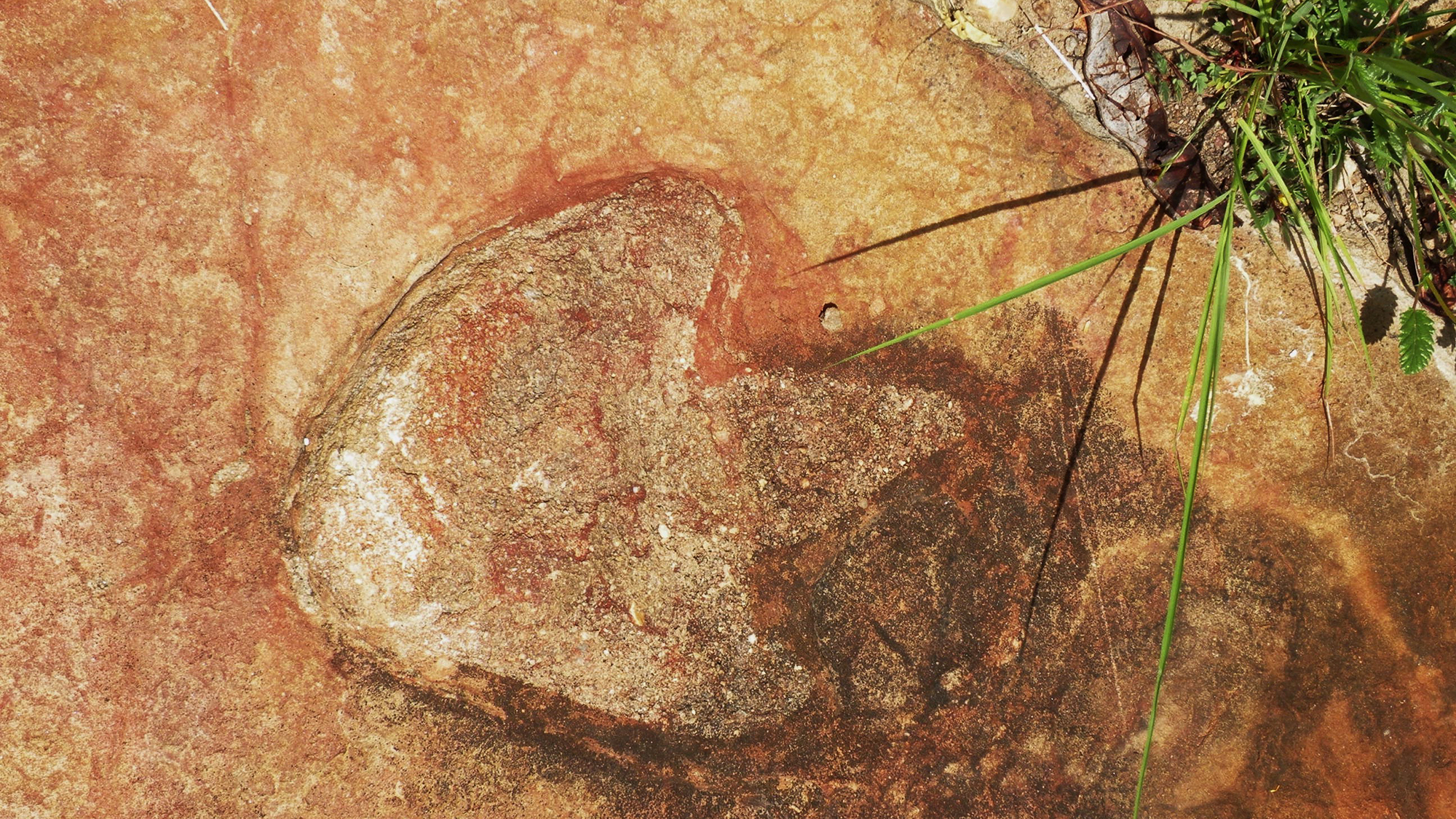Technology
Dinosaur footprints from Africa and South America match

A team of paleontologists recently found matching sets of early Cretaceous dinosaur footprints on what are now two different continents. One set is in Brazil and the other is about 6,000 kilometers away in Cameroon. More than 260 footprints show where terrestrial dinosaurs last roamed freely between Africa and South America for millions of years before the two continents broke up. The findings were published on August 23 by the New Mexico Museum of Natural History and Science.
“We determined that these footprints were similar in age,” study co-author and Southern Methodist University paleontologist Louis L. Jacobs. said in a statement. “They were also similar in their geological and plate tectonics. In terms of shape they are almost identical.”
[Related: A newly discovered sauropod dinosaur left behind some epic footprints.]
Studying footprints (or trace fossils) like these are important because they provide clues about how fast dinosaurs and other organisms walked or ran and even what their skin looked like. Compared to the more familiar body fossils of teeth or bones, trace fossils often contain evidence of how these long-dead animals interacted with their environment and can also indicate what their environment may have been like.
The team thinks most of the footprints were made by three-toed theropod dinosaurs. A few were probably also made by sauropods or ornithischians. The footprints are pressed into the mud and silt along some ancient rivers and lakes and were made 120 million years ago on a single supercontinent known as Gondwana. This supercontinent broke off from the larger landmass Pangea. Just before the connection between Africa and South America was completely severed, lakes formed between the basins.
“Plants fed the herbivores and supported a food chain,” says Jacobs. “Muddy sediments left by the rivers and lakes contain dinosaur footprints, including those of carnivores, documenting that these river valleys could have provided specific pathways for life to travel across continents 120 million years ago.”
South America and Africa started to sort of split apart 140 million years ago. This breakup caused enormous cracks in the Earth’s crust, called fissures, which opened along pre-existing weaknesses in the Earth’s crust. As the tectonic plates beneath the two continents moved apart, magma from the Earth’s mantle rose to the surface. The magma forged a new oceanic crust as the continents moved apart. Eventually, the South Atlantic Ocean filled the void between these new continents.
[Related: Why dinosaur footprints inspired paleontologist Martin Lockley.]
The South American footprints were found in the Borborema region of northeastern Brazil. The African footprints were discovered in the Koum Basin in northern Cameroon. Some geological signs of the breakup of the continents are present in both locations where these dinosaur footprints are located. Geological structures that formed when the Earth’s crust pulled apart are called semi-gripping cymbals were present in both areas. These basins contain ancient river and lake sediments and fossil pollen, indicating that the area is approximately 120 million years old.
“One of the youngest and narrowest geological connections between Africa and South America was the elbow of northeastern Brazil, nestled against what is now the coast of Cameroon, along the Gulf of Guinea,” says Jacobs. “The two continents were contiguous along that narrow stretch, so animals on either side of that connection could potentially move across.”
The article also paid tribute to the late paleontologist Martin Lockley, who spent most of his career studying dinosaur tracks and footprints.













